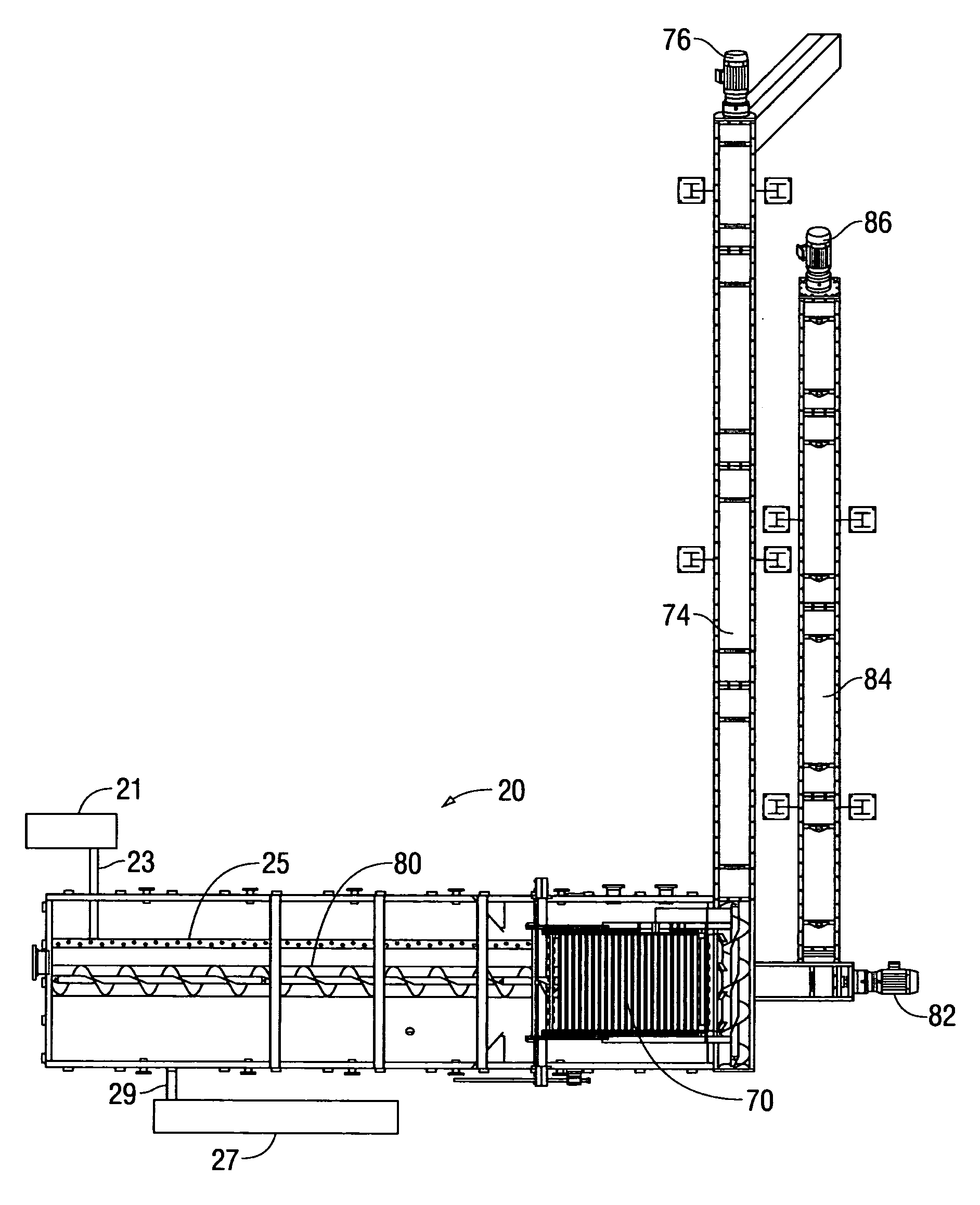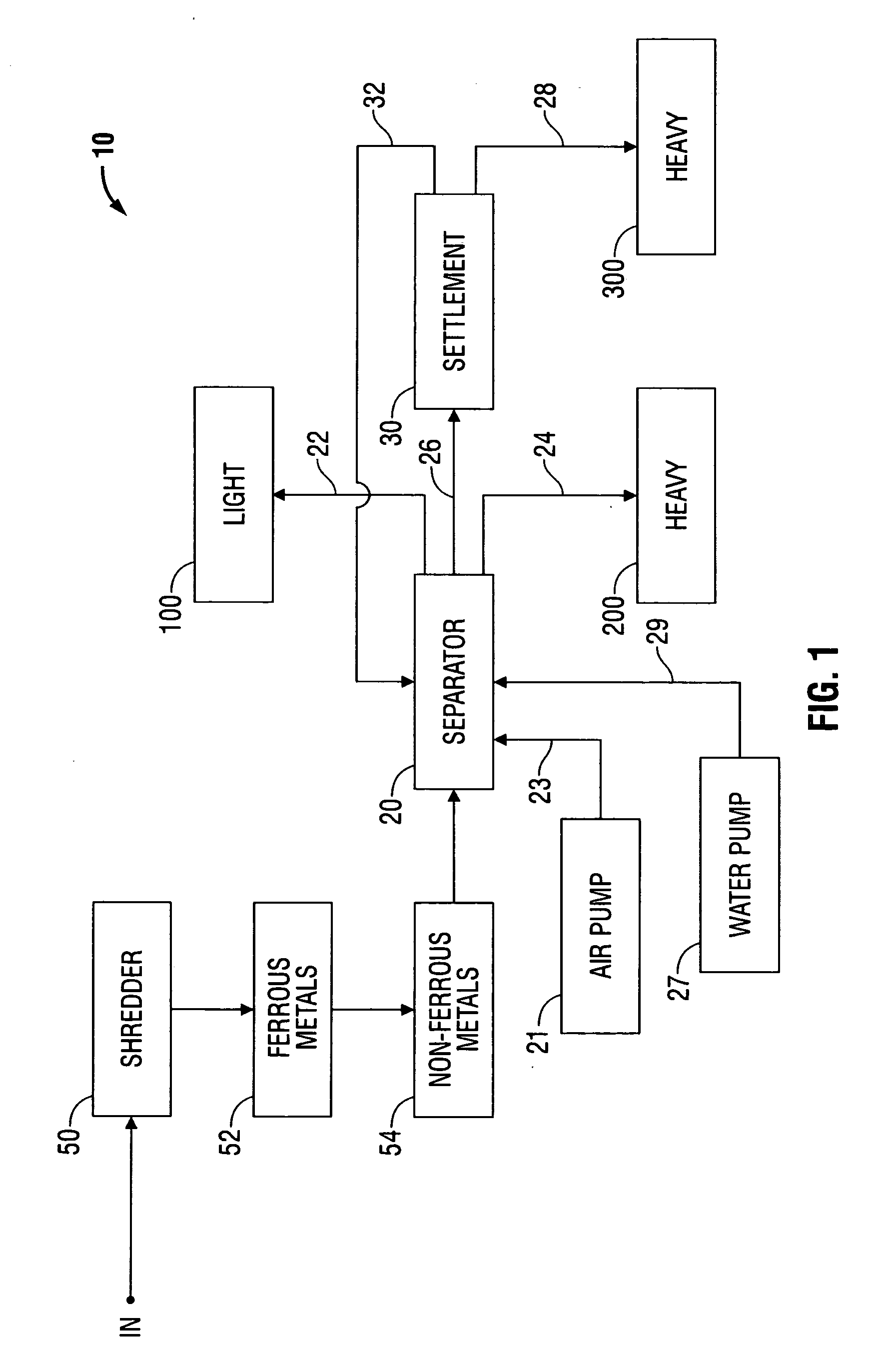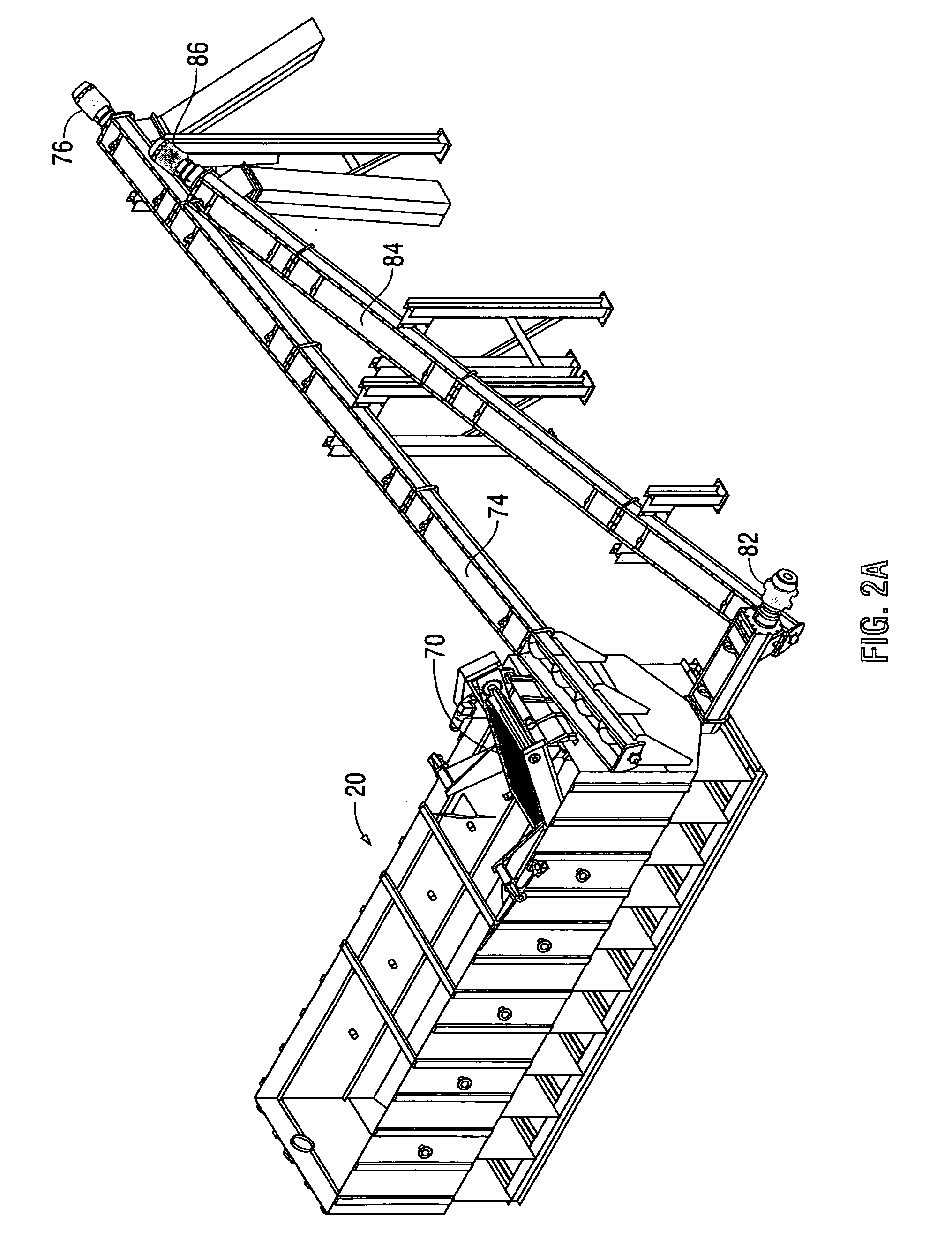System and method for separation and handling of construction, demolition and garbage materials
- Summary
- Abstract
- Description
- Claims
- Application Information
AI Technical Summary
Problems solved by technology
Method used
Image
Examples
Embodiment Construction
[0017]Referring now to FIG. 1, there is illustrated, in block diagram, the system 10 according to the invention in which the refuse / waste material, whether it be C&D materials, or garbage, or the like, is dumped from the “in” input location into the shredder 50. The shredder 50 is preferably of the conventional variable size type, sometimes referred to as a “(+) or (−)” type, for example a 3″, + or −1″. Depending upon the intended final use of the output product of the system 10, the shredder 50 can produce larger or smaller shreds.
[0018]The output of the shredder 50 is fed into a conventional ferrous metal detector 52 which uses the magnetic attraction of the ferrous materials to pick out and remove such ferrous materials from the mix.
[0019]The mix is also fed through a conventional non-ferrous metal detector 54, which uses eddy currents to pick out and remove such non-ferrous materials, for example, aluminum cans, from the mix. It is of no consequence whether the ferrous metal mat...
PUM
 Login to View More
Login to View More Abstract
Description
Claims
Application Information
 Login to View More
Login to View More - R&D
- Intellectual Property
- Life Sciences
- Materials
- Tech Scout
- Unparalleled Data Quality
- Higher Quality Content
- 60% Fewer Hallucinations
Browse by: Latest US Patents, China's latest patents, Technical Efficacy Thesaurus, Application Domain, Technology Topic, Popular Technical Reports.
© 2025 PatSnap. All rights reserved.Legal|Privacy policy|Modern Slavery Act Transparency Statement|Sitemap|About US| Contact US: help@patsnap.com



